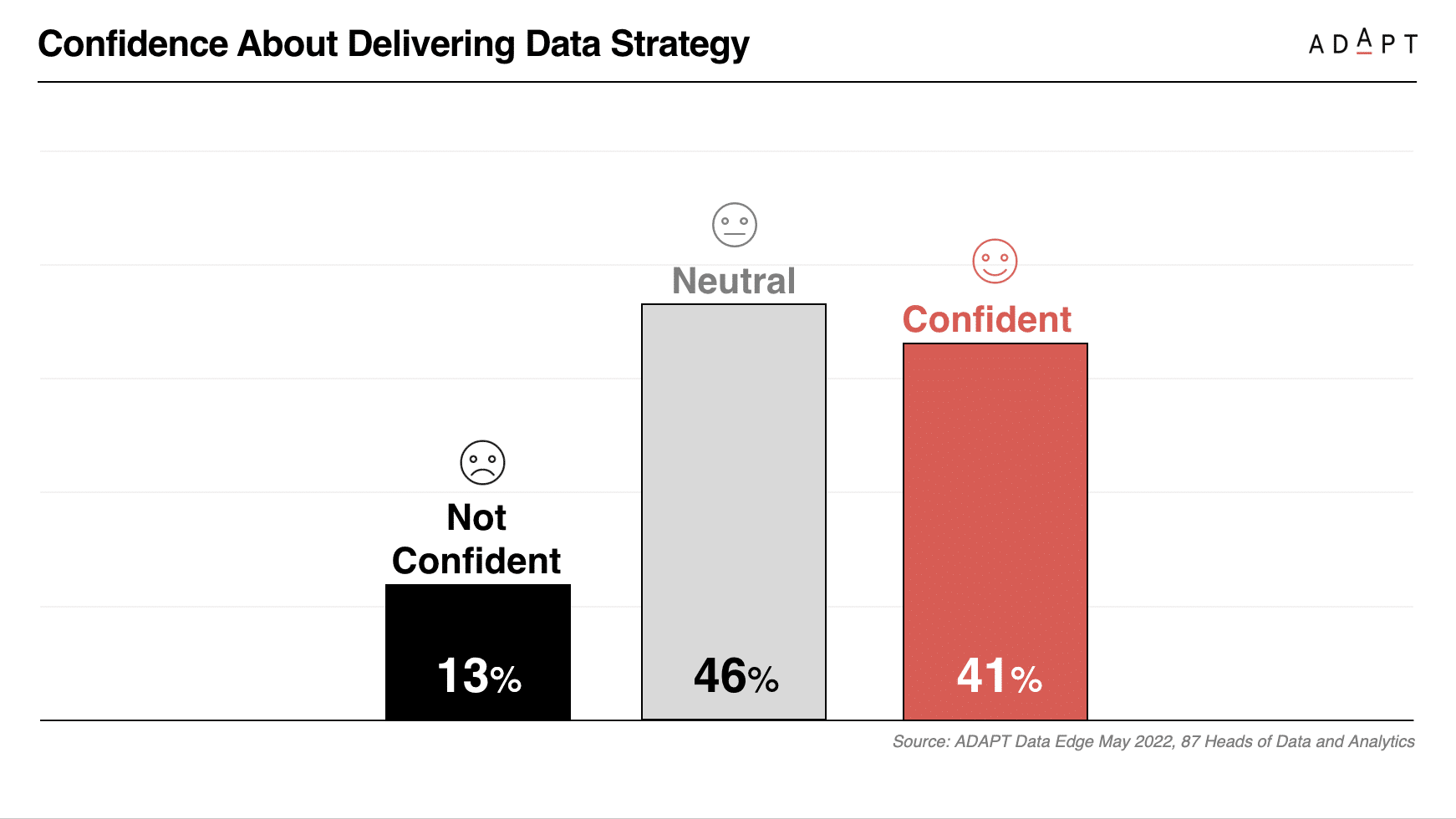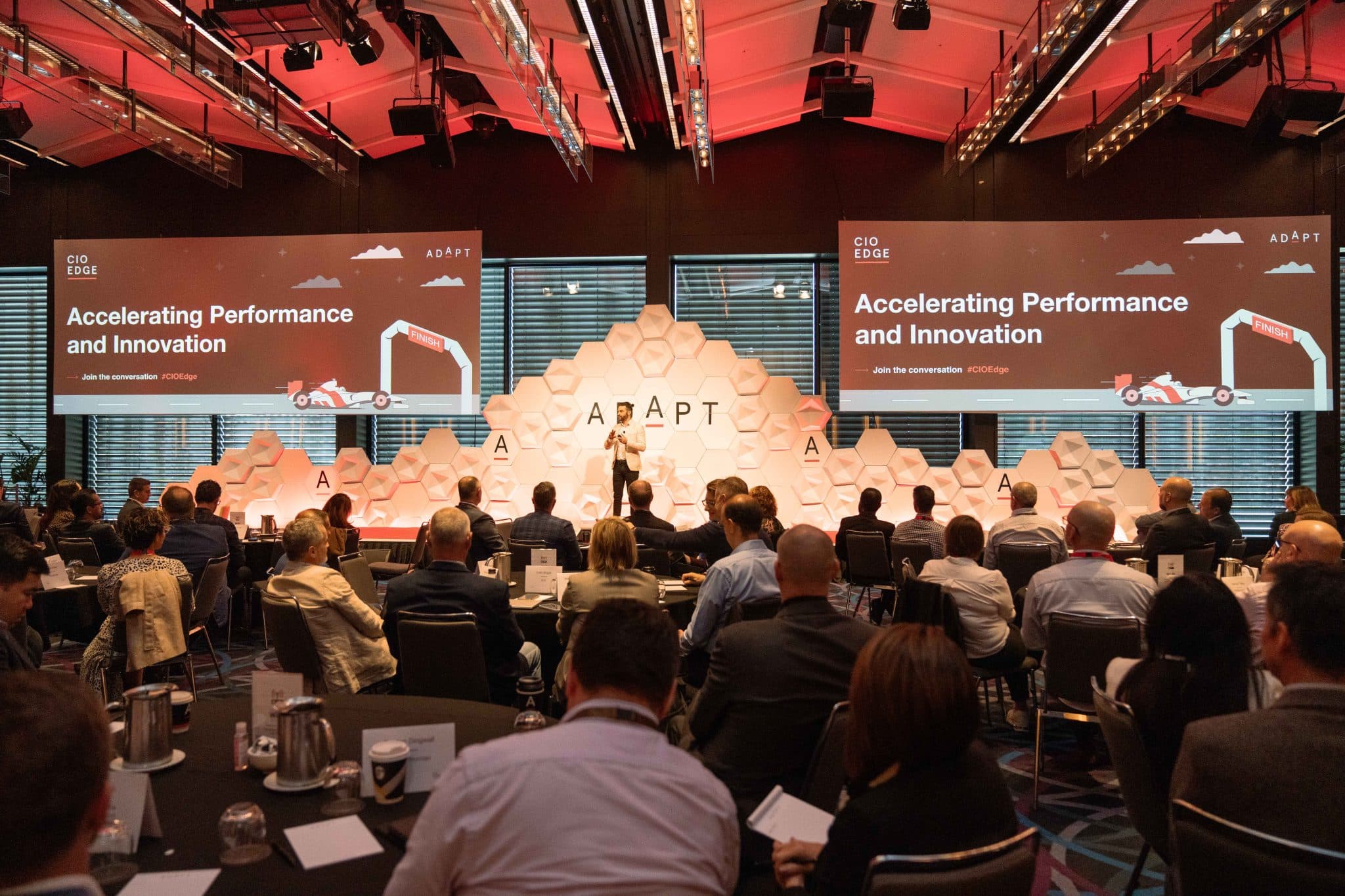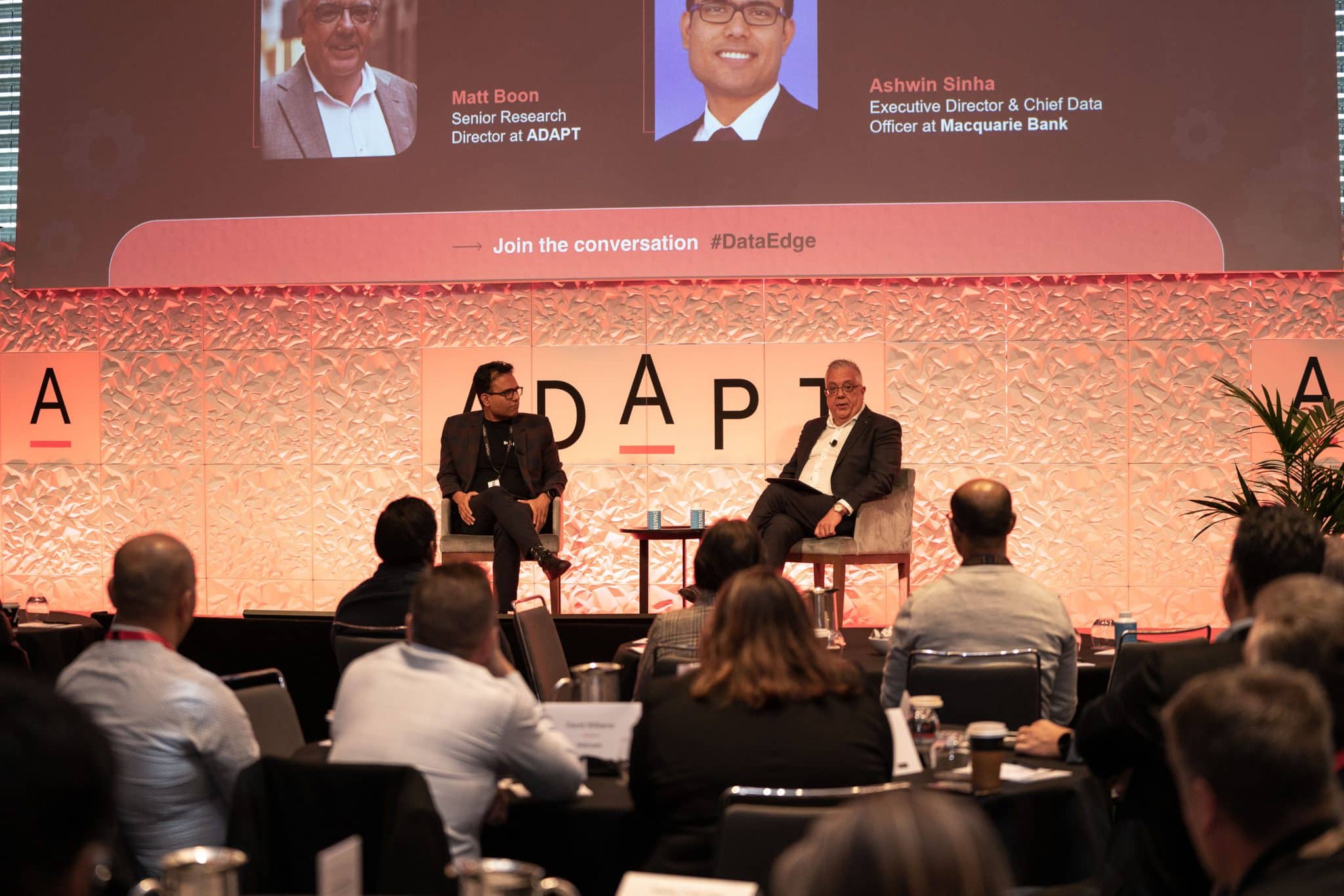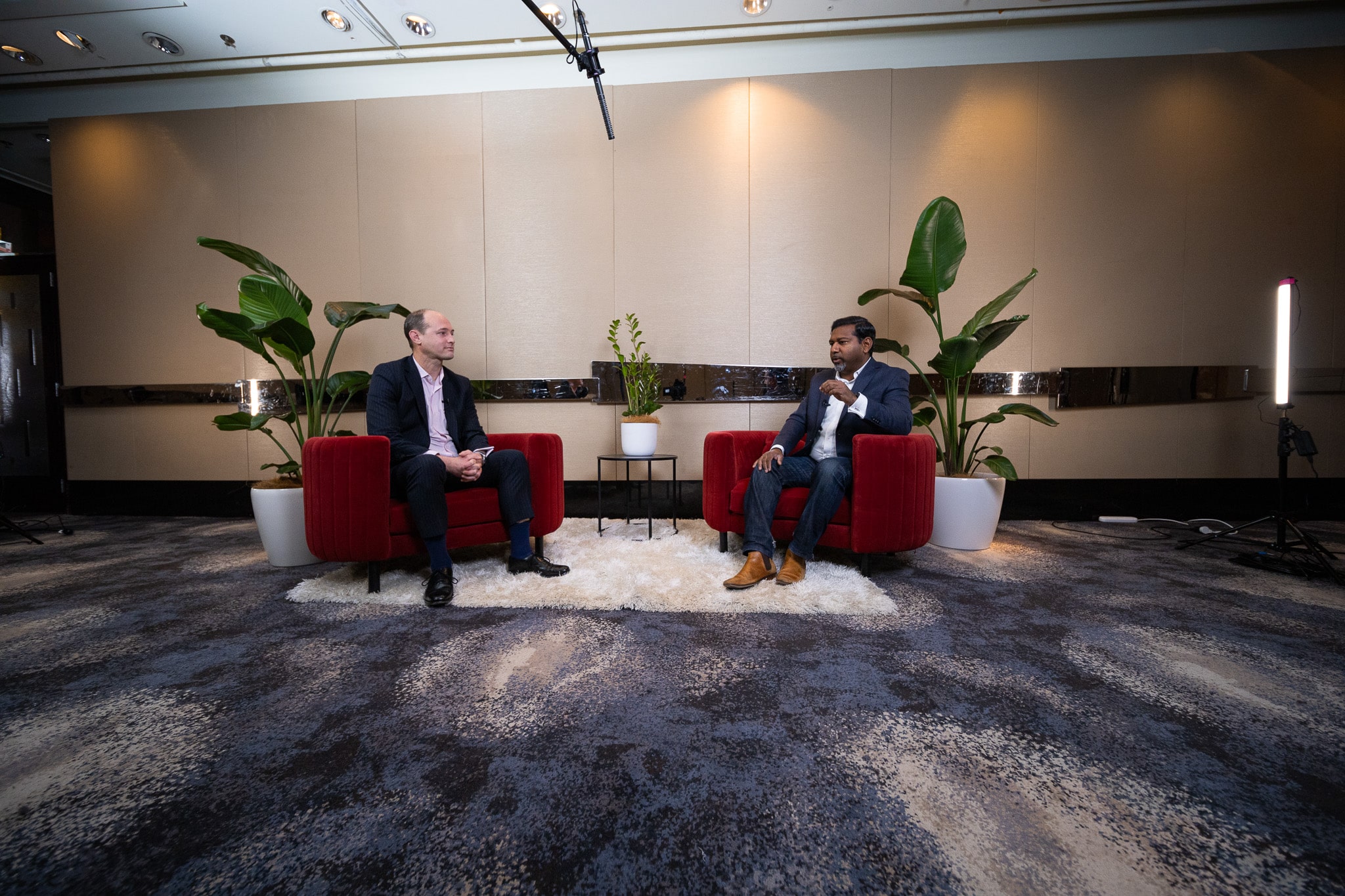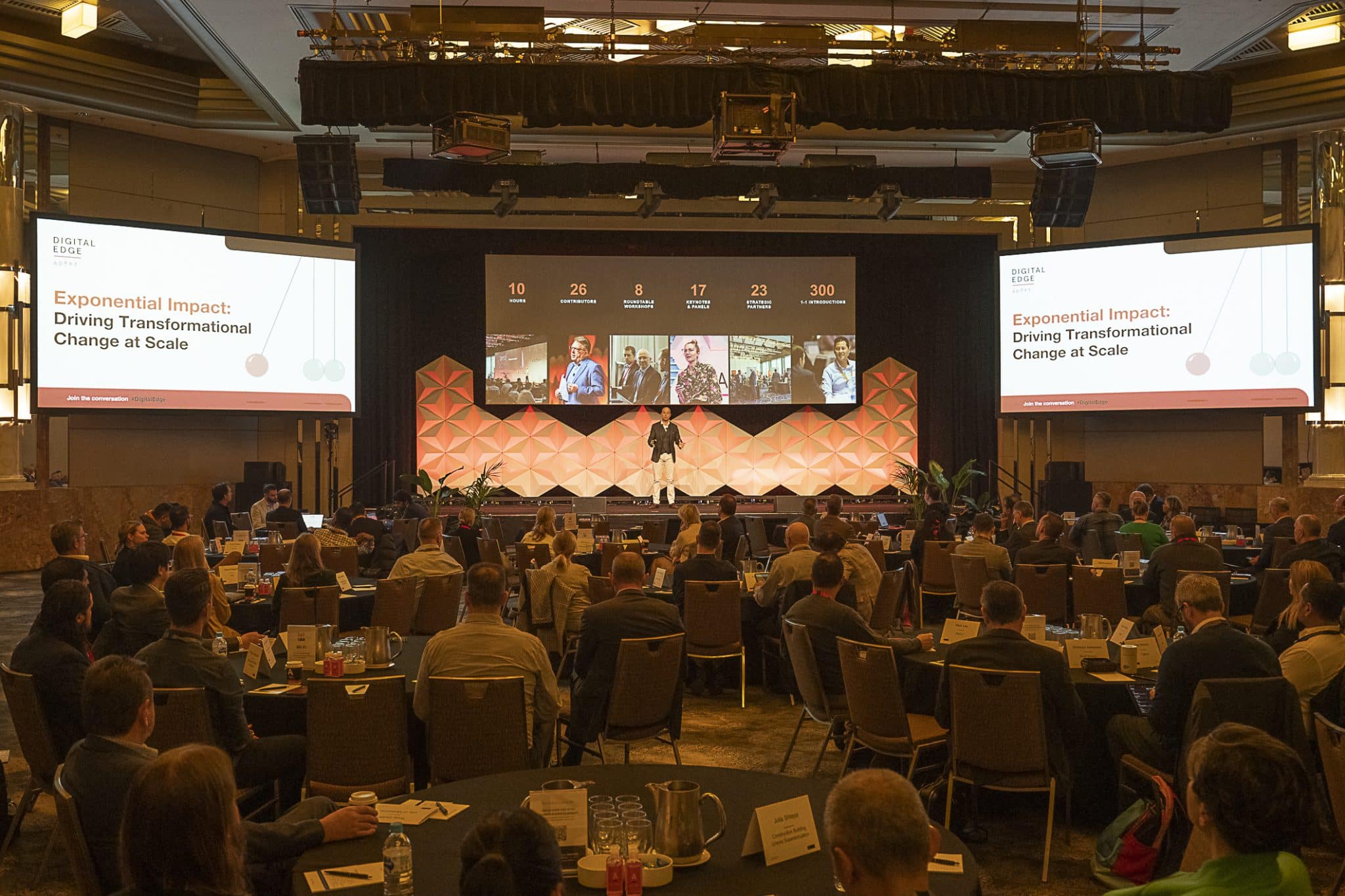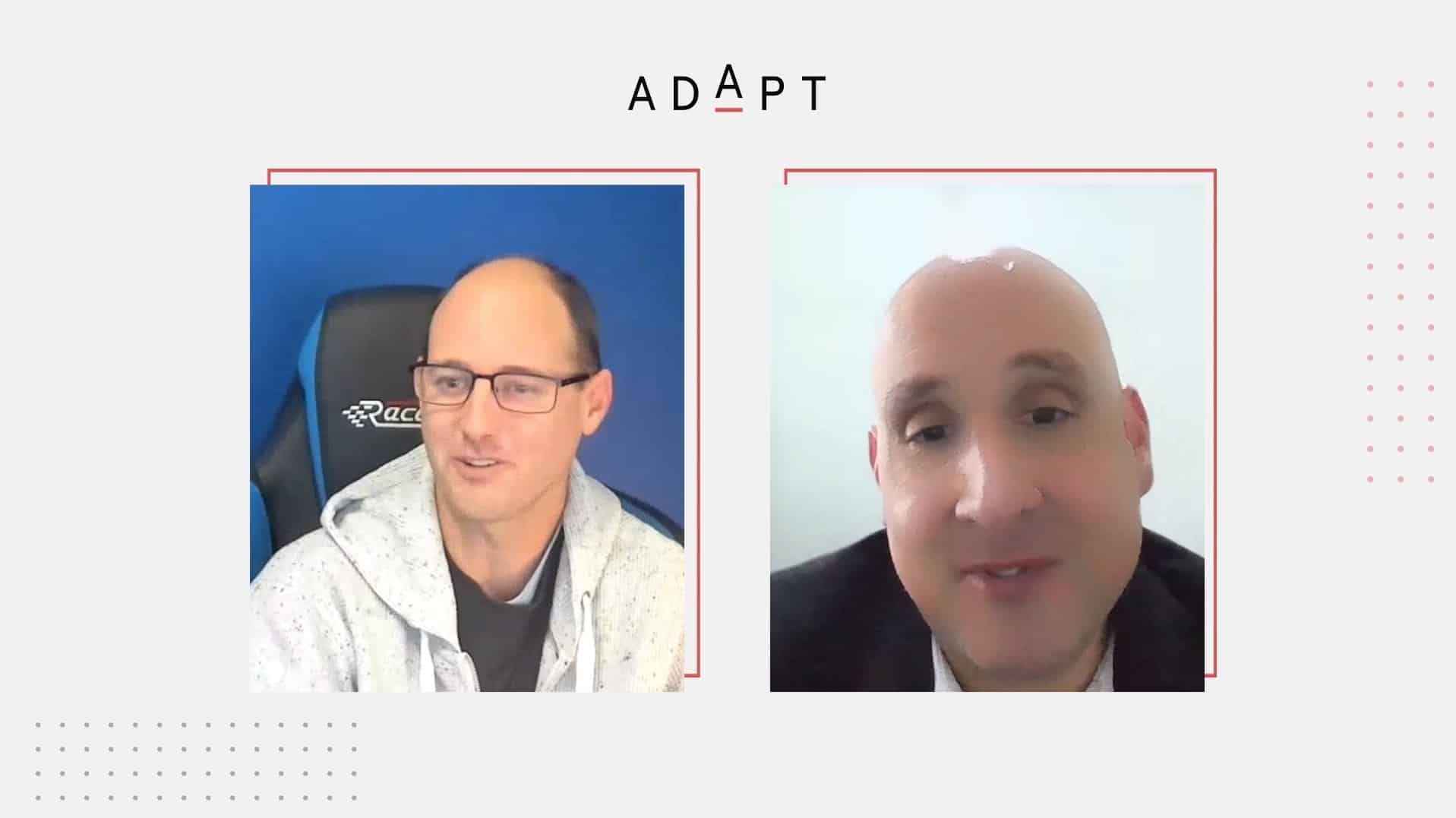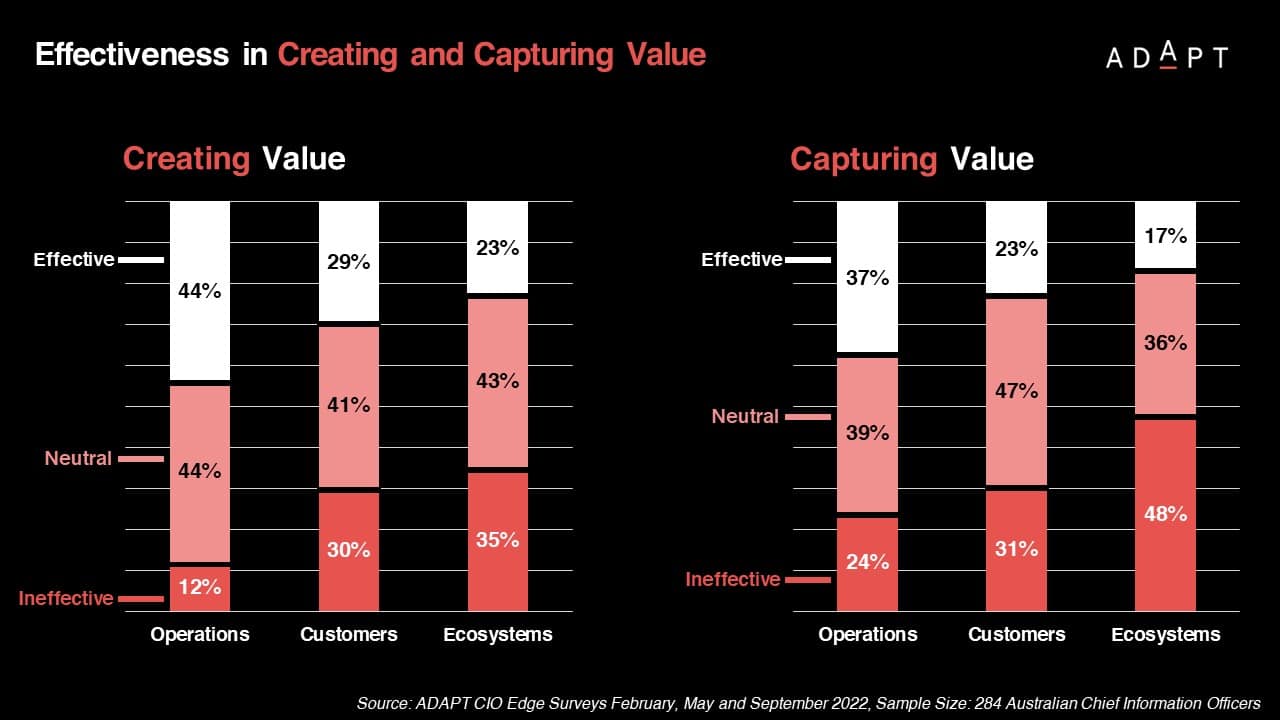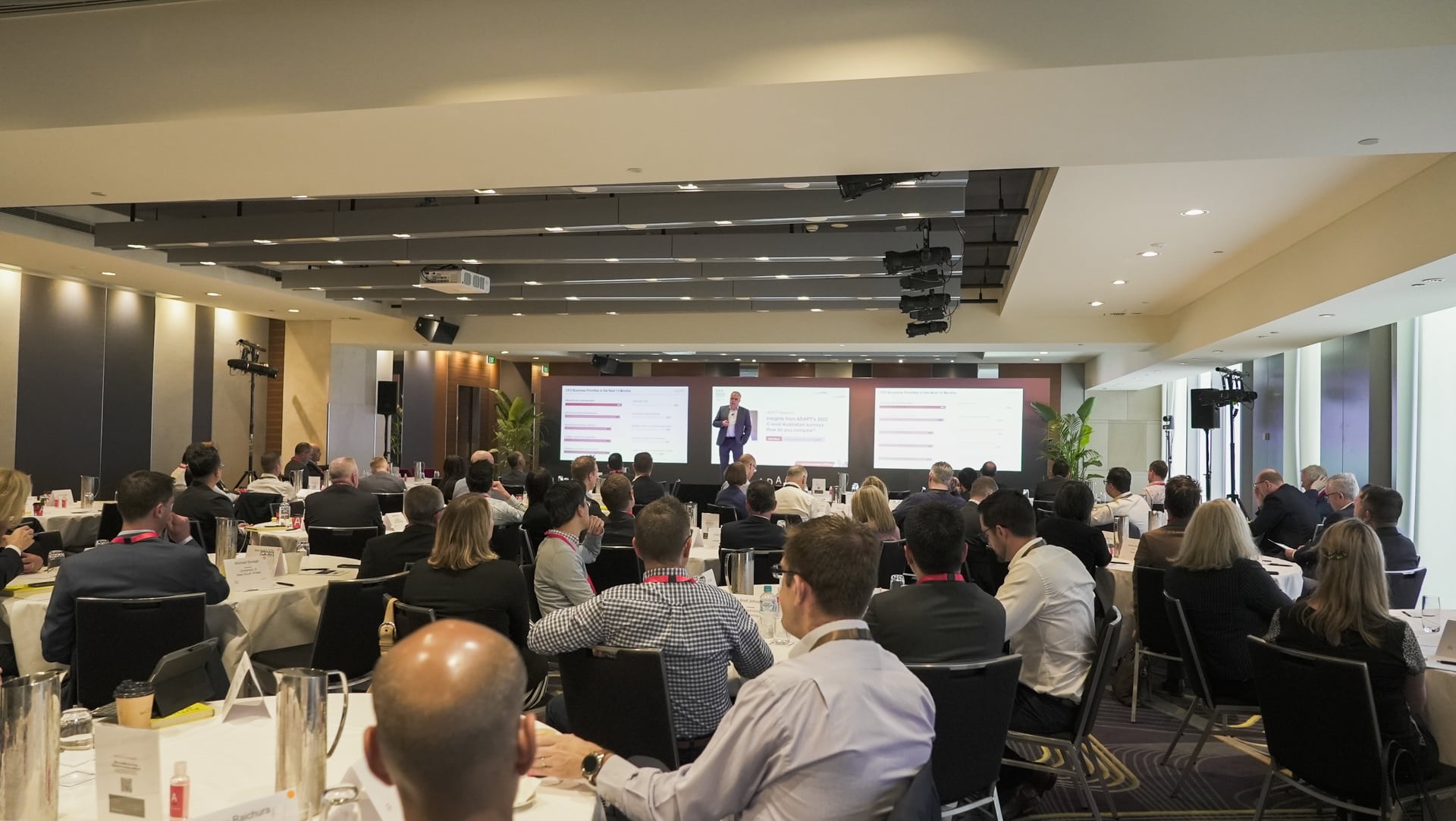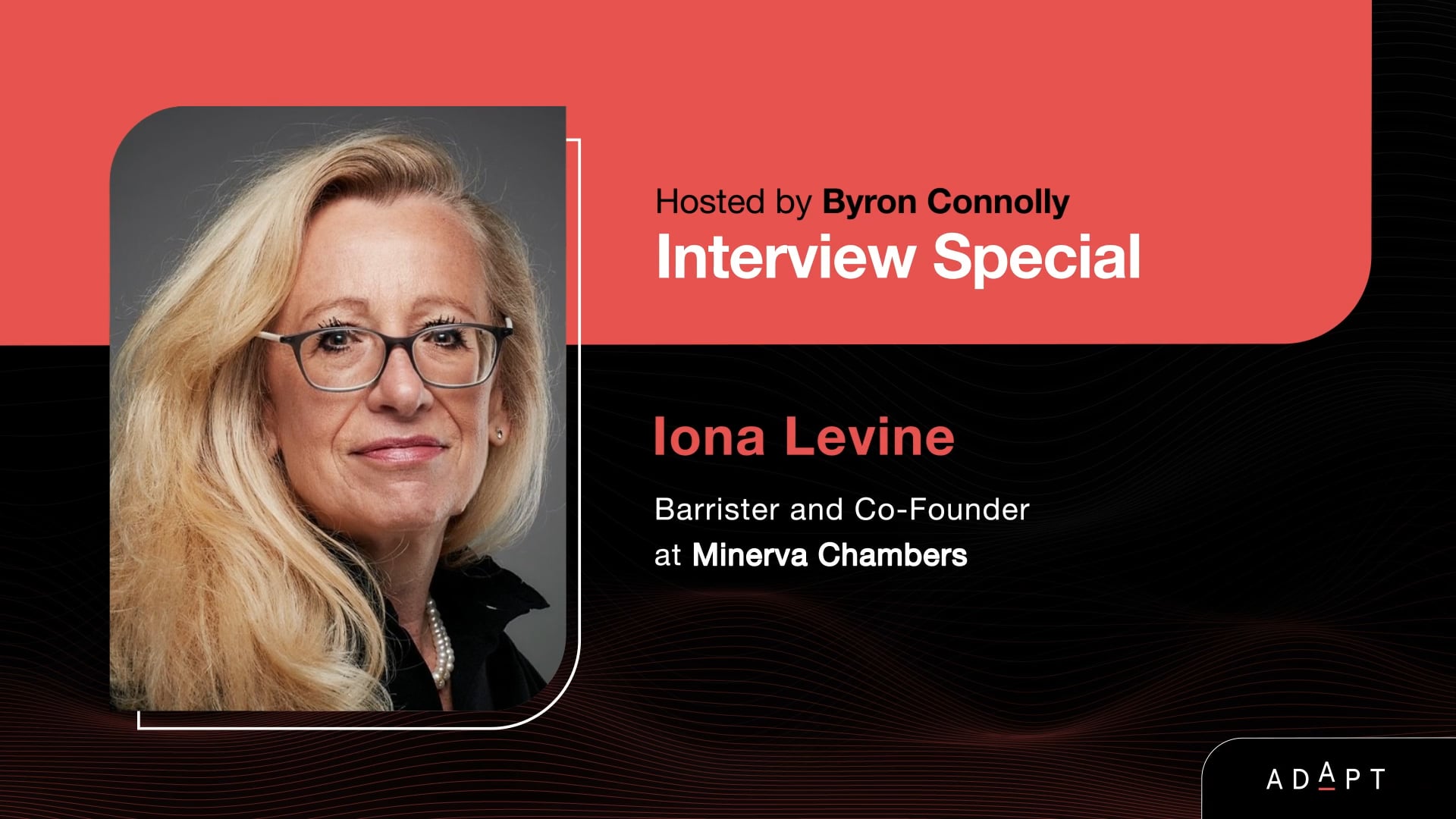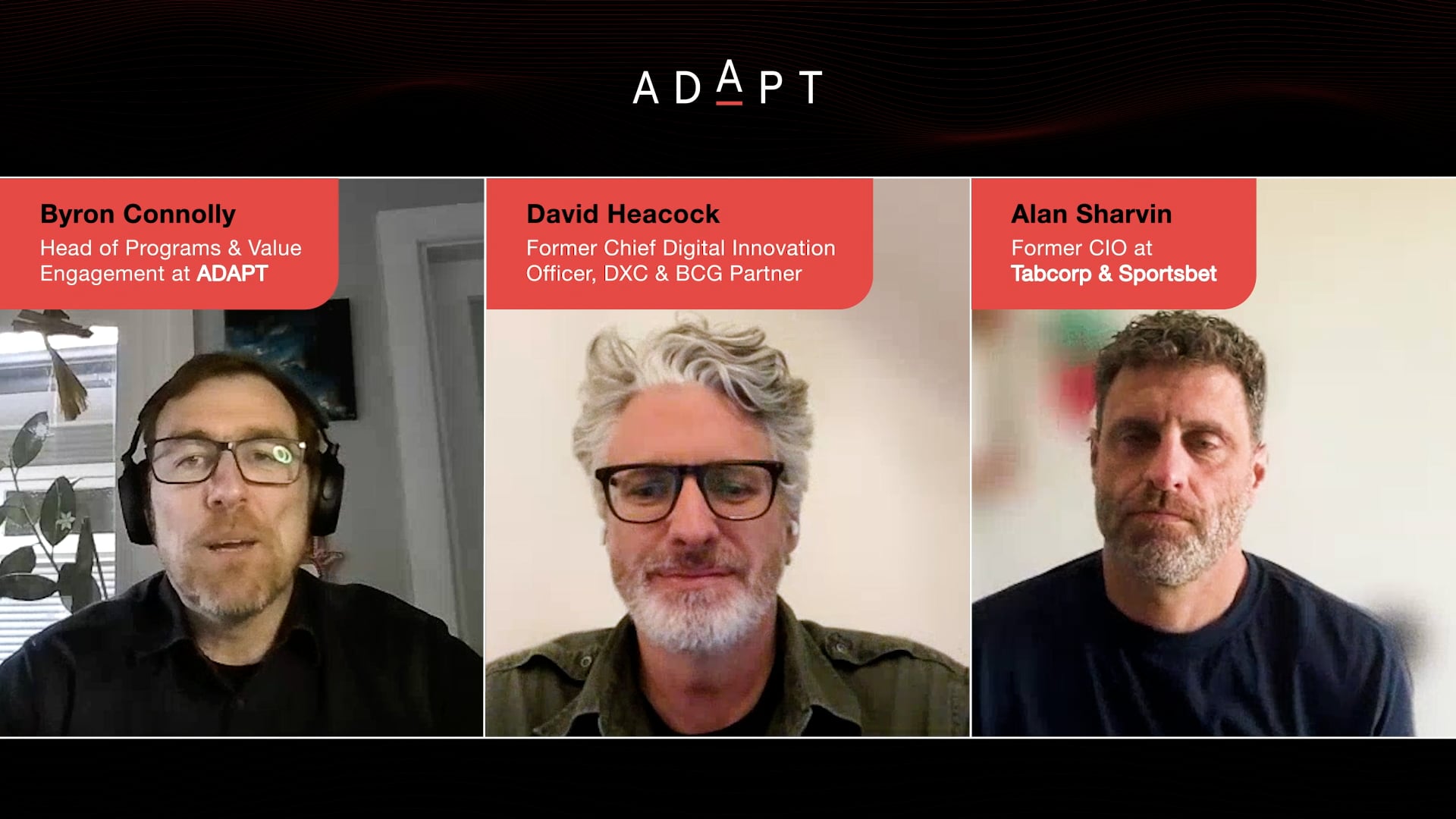Mastering Business Case Development for Executives
Master business case development and align IT strategically with insights from Australian tech leaders.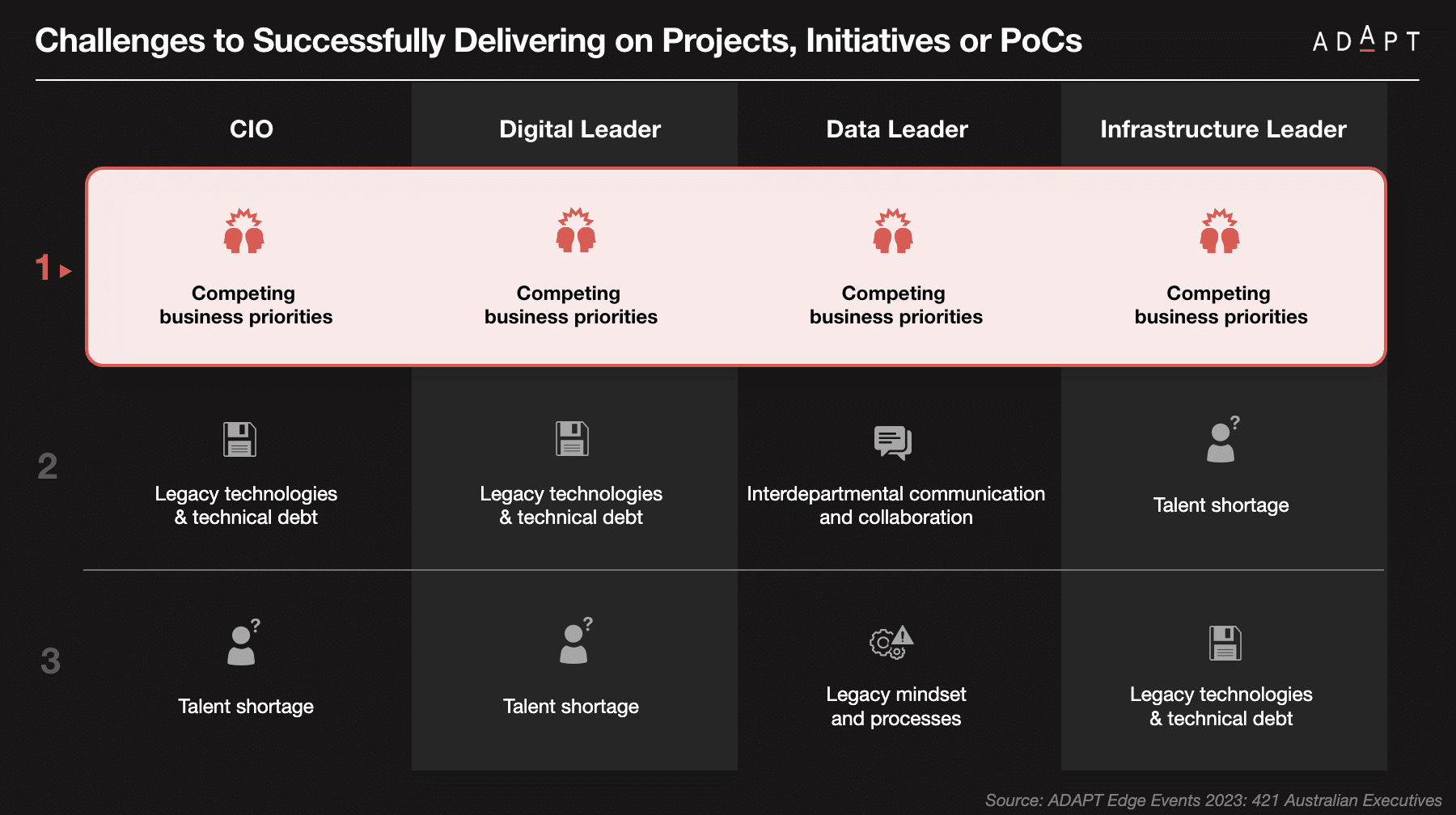
Elevate your strategic edge by mastering the art of business case development, which is crucial for thriving in Australia’s competitive corporate environment.
Craft compelling cases that resonate with executive expectations and drive market engagement.
Leverage insights from Australian tech leaders and learn practical strategies for digital success through our Edge events and interviews.
Achieving Symbiosis for Success
Aligning business cases with executive and board expectations is not just a challenge but a strategic imperative.
Mastering this alignment, especially with insights from ADAPT, enables organisations to establish a symbiotic relationship between technology initiatives and broader business objectives, paving the way for successful and impactful IT projects.
Key Action Steps:
- Implement clear communication and visualisation strategies.
- Foster active executive engagement throughout the decision-making processes.
- Articulate ROI and tangible business value derived from IT initiatives.
Unlocking Transformative Potential: Integrating Data Strategy with Business Objectives
For IT executives, constructing robust business cases to get buy-in for tech projects.
Ensure your data projects are in harmony with your company’s broader business objectives, making certain that each technological innovation or service you implement directly responds to market needs and evolving trends.
Cultural Shift and Governance Integration:
Promote cultural change to recognise data as a strategic asset, thoroughly integrating it into your internal governance structures.
This approach ensures your internal IT initiatives are industry-aligned, effectively meeting market evolutions and regulatory demands.
Meticulous Data Management:
Meticulous data management establishes open ecosystems for secure sharing, realising the transformative potential of data.
Strategic Governance:
To effectively cater to user needs and pinpoint precise business use cases through strategic governance, IT executives can draw valuable insights from practical case studies such as the analytics strategy by the Catholic Education School System.
Leadership in Data:
In constructing evidence-based business cases, prioritise leadership in data management. Successful case studies clearly demonstrate this crucial aspect, providing valuable guidance for effective implementation.
Fostering a Data-Driven Culture:
To cultivate success, foster a data-driven culture within your organisation.
Align your practices seamlessly with broader business goals and proactively address challenges associated with data literacy.
This approach will pave the way for a more effective and impactful data integration in your operations.
Ethical Deployment of AI:
For a well-rounded grasp of ethical AI deployment, it’s essential to manage AI bias effectively, adhere strictly to laws and regulations, and implement secure data management standards.
Prioritise these critical elements to guarantee the ethical and responsible use of artificial intelligence in your technology strategies.
Continuous Review:
In the quest for responsible data management, governance, compliance, and ethics, it’s vital to engage in ongoing policy and procedure reviews.
This commitment ensures your strategies remain robust, in step with changing standards, and uphold ethical principles. Regular evaluations are fundamental in sustaining excellence in these key areas of your operations.
Harmonise Data Strategy for Business Success:
To effectively harness the power of data in today’s digital landscape, establishing a data strategy that synchronises with business objectives is crucial.
This approach serves as a guiding force, aligning your data strategies with broader business objectives. Embracing this enables optimised data use in the rapidly changing digital world.
Navigating Challenges in Cloud and Infrastructure Management
Reassessing Motivations and Methodologies:
When undertaking the transition to cloud and infrastructure management, it is essential to approach the process with a clear mindset.
Reassess your motivations and methodologies, focusing on the effective migration of application workloads to either public or private clouds.
This approach ensures a systematic and well-guided shift, optimising the benefits of cloud implementations.
Agility and Growth:
Seize the opportunity for agility and growth by strategically integrating modern technologies into your operations.
This approach ensures the purposeful incorporation of innovations, fostering a proactive stance towards technological advancements and business expansion.
Geographical Challenges:
Adopting a tailored approach is essential when addressing geographical challenges, particularly in the Australian context.
Embrace a strategic and sustainable methodology to effectively navigate and overcome these challenges.
This approach is crucial in developing practical strategies that are specifically adapted to the unique geographical landscape of Australia, ensuring resilience and success in your technology endeavours.
End-to-End Value Chain:
Recognising the end-to-end value chain becomes paramount within this transition.
Robust Economic Model:
Establishing a strong economic model is crucial for successful cloud migration. It’s vital to understand how this model can add both tangible and intangible value to your operations.
This focus will help you create and implement a comprehensive economic framework, ensuring that your move to the cloud results in concrete and critical benefits for your technology strategies.
Singular Source of Truth:
To create a single source of truth, a well-defined approach is essential.
Focus on implementing a standard data model capable of efficiently ingesting data from diverse sources and identifying important Key Performance Indicators (KPIs).
This strategy guides you in systematically building and using dashboards, boosting your capacity to generate value and meet critical organisational objectives.
Navigating Complexity: Transformation Process and Forward-Thinking Approach
Nonlinear Transformation:
In managing the transformation process, it’s crucial for IT executives to adopt a clear and structured approach.
Understand that this journey is not linear; it involves navigating complex twists and turns, learning from past experiences, and applying these insights to future steps.
This approach is key in grasping the nuances of the transformation, offering a framework for learning, adapting, and effectively applying insights at each stage of the process.
Incremental Steps and Major Leaps:
It’s important to understand that progress often requires taking small steps before making major leaps.
This principle assists in strategic planning and executing incremental advancements, ensuring a methodical journey towards innovation and success in your technology initiatives.
Capturing Organisational Outcomes:
Developing dashboards helps IT leaders understand the value trajectory, identify impediments to value creation, and capture behaviours leading to vital organisational outcomes.
Bridge the Gap for IT Success – Unleash Strategic Alignment with Insightful Action Steps
Bridging the gap between detailed IT plans and executive expectations is a pivotal challenge.
ADAPT insights on data leaders highlight the importance of data in building evidence-based business cases.
This strategic alignment ensures that technology investments are technically sound and strategically aligned with broader organisational goals, garnering crucial support from top leadership.
The Challenge: Bridging the Gap
The central challenge lies in translating intricate technical details and project-specific requirements into language that resonates with executives and board members.
Often, these disconnects result in misunderstandings, misalignment, and potential setbacks for IT projects.
Strategies for Alignment: A Holistic Approach
Organisations need to align technical details with executive expectations to tackle challenges effectively.
Leveraging insights from end-to-end value chains is crucial for identifying and clearly articulating value in business cases.
These strategies help align business cases with executive and board expectations:
1. Clear Communication and Visualisation:
Develop succinct communication strategies that effectively translate technical aspects into clear business impacts.
Use visual aids like charts and executive summaries to demystify complex IT plans, highlighting their relevance to overall business goals.
These tools are key in making IT strategies understandable, ensuring clarity and showcasing their direct business impact.
2. Executive Engagement:
Encourage active participation inp technical planning and decision-making by inviting executive input and addressing their concerns in real-time.
This approach fosters ownership and builds a shared vision, leading to a collaborative effort towards common goals.
3. ROI and Business Value Emphasis:
Clearly articulate the Return on Investment (ROI) and business value of IT initiatives, showing how projects align with strategic business priorities, drive revenue growth, and improve organisational efficiency.
This method presents a compelling case, highlighting the strategic relevance and contributions of your IT plans to the business.
Case Studies: Showcasing Success in Alignment
Aligning IT and Business Priorities: Overcoming Budget & Visibility Challenges
This keynote presentation highlights clear communication and visualisation in aligning IT projects with strategic business priorities, demonstrating how overcoming budget and visibility challenges can drive revenue growth and improve organisational efficiency.
Enhancing operational effectiveness and building a secure, trusted environment are priorities for companies, influenced by the economic landscape and the impact of data breaches on customer trust.
CIO Edge’s recent survey identified key challenges in aligning IT with business goals, including budget constraints and the need for improved cross-department visibility.
Gabby Fredkin, Head of Data and Analytics at ADAPT, discusses how effective organisations derive value from operations and ecosystems. This includes aligning projects with strategic business priorities, boosting revenue growth, and improving organisational efficiency.
He highlights the importance of skills development and data literacy, crucial in navigating AI and generative technology challenges, a key focus for IT leadership.
How Macquarie Bank Built an Efficient Data Infrastructure for Digital Transformation
Macquarie Bank demonstrates executive engagement and continuous learning as key to adapting to industry changes, highlighting how a strategic focus on data governance and AI can transform banking operations.
In an interview at Data Edge, Ashwin Sinha, Executive Director and Chief Data Officer at Macquarie Bank, delves into strategic focus areas for the bank.
These include engineering delivery acceleration, data governance, data literacy, and artificial intelligence.
Ashwin highlights the importance of continuous learning to stay abreast of rapid changes in the banking industry, providing valuable lessons for IT executives in adapting and evolving within their own sectors.
Embracing Transformation at Scale: Ensuring Relevance in an Ever-Changing Landscape
RMIT outlines how its large-scale transformation, guided by executive engagement, aligns with changing educational landscapes, calling out the need for strategic and impactful organisational changes.
Chaminda Ranasinghe, Chief Experience Officer (CXO) at RMIT, emphasises that organisations, including universities, must undergo transformative change at scale.
His perspective can guide IT executives in understanding the essential elements and strategies necessary to facilitate impactful transformations within their respective organisations, particularly in the university sector.
What We Learned About Driving Transformational Change at Digital Edge
ADAPT’s Digital Edge brought together 130 Digital Transformation and Customer Experience leaders to discuss digital innovation and customer-centric strategies.
Key themes included challenges in digital transformation, enhancing customer experiences, and optimising organisational technology use.
The event highlighted the need for an aligned strategy that synergises digital, people, and data initiatives for maximum value.
Other focal points included becoming a trusted ecosystem partner and reshaping operating models for the digital era.
Revolutionising Supply Chain: The Power of Machine Learning at the Shann Group
The Shann Group’s journey illustrates how to articulate ROI through integrating machine learning in supply chain management, emphasising the value of cultural shift and technology integration for business success.
ADAPT’s Principal Research Analyst, Shane Hill, had the privilege of sitting down with Krist Davood, the Chief Information Officer (CIO) at the Shann Group, to gain valuable insights into their approach and lessons learned in implementing digital transformation at scale.
Prioritise cultural shift and technology integration for successful digital transformation. Foster inclusivity and adaptability and connect technology teams with business operations.
48% of CIOs Fail to Reap the Benefits of Technology Ecosystems
This keynote presentation highlights the importance of clear communication in bridging the gap between technology and business outcomes, as evidenced by the CIOs’ challenges in leveraging technology ecosystems for commercial success.
The CIO’s role has transformed from technology support to a crucial driver of corporate performance through advanced technology and business transformation.
ADAPT’s 2022 research with 284 CIOs reveals a 48% disconnect between expectations and benefits from technological ecosystems.
This shift positions CIOs as critical contributors to commercial success, focusing on either cost-cutting and efficiency or creating and capturing value.
Those prioritising value creation leverage technology for revenue growth, showcasing analytical problem-solving skills.
Building Digital Fitness and Security: Insights from Victoria Police’s Chief Digital Officer
Victoria Police’s approach to digital transformation reflects a strong executive engagement and a focus on continuous innovation, demonstrating how aligned financial planning can lead to sustained digital fitness and security.
Steve Hodgkinson, Chief Digital Officer at Victoria Police, emphasises that digital transformation is a continuous journey demanding organisations to be digitally fit and agile.
Bupa’s Former CIO on Why the CIO Should Be Called the Chief Influence Officer
This case study emphasises the role of the CIO in enhancing the IT-business partnership, showcasing how clear communication, visualisation, and a focus on ROI can redefine the CIO’s influence in digital strategy across various sectors.
Sami Yalavac, the former Chief Information Officer of Bupa ANZ, oversees the digital roadmap across various sectors, including Private Health Insurance (PHI), Care Homes, Optometry, Dental, Tele-medical Services, Visa Services, and Wellness.
During the CIO Edge event, he discussed practical approaches to enhance the partnership between IT and the business.
In a conversation during the CIO Edge event, practical strategies were explored to strengthen the IT and business partnership.
Bupa ANZ adopts a product-based delivery model, utilising mission-based teams with varied skill sets, fostering collaboration and scalability for enhanced value delivery, and promoting a tighter IT-business alignment.
Prioritise digital fitness, continuous innovation, and aligned financial planning for sustained and effective digital transformation.
UniSuper Drives Member Experience Enhancement through Holistic Strategies and Digital Innovation
UniSuper’s success is anchored in a holistic approach to project prioritisation that extends beyond IT projects, encompassing initiatives such as changing insurance providers, building a data lake, and enhancing the advice platform.
This comprehensive strategy involves ranking projects based on financial best interest duties, cost savings, risk reduction, and revenue increase, ensuring alignment with the organisation’s goals.
Additionally, UniSuper acknowledges the ongoing challenge of modernising legacy systems, emphasising the need to continuously update core repository systems for increased efficiency while balancing technological advancements with tangible benefits.
Uncover IT Value—Reveal Its Strategic Importance
In pursuing organisational modernisation, understanding Information Technology’s (IT) strategic importance in business cases is paramount.
Insights from Matt Boon, Senior Research Director at ADAPT, shed light on critical priorities, challenges, and focus areas for the next 12 months.
According to Matt, organisations will prioritise accurate and timely data for informed decision-making. Addressing data inconsistencies and improving data visibility will be key investment priorities for the coming year.
Importance of Highlighting IT’s Strategic Value
Recognising the integral role of IT in talent management, cost optimisation, and innovative revenue streams is crucial. Matt’s insights bring forward the importance of highlighting the strategic value of IT to address challenges related to cloud migration, recurring costs, and legacy investments.
Strategies for Demonstrating Return on Value
Talent Attraction and Retention: Leveraging IT Solutions
Focus on strategies emphasising how IT initiatives create an appealing work environment, positively impacting talent recruitment and retention.
Explore practical approaches that highlight the link between technological advancements and the enhancement of workplace appeal.
Understand the key factors influencing talent decisions and learn how your solutions can foster a work environment that attracts and retains top talent.
This instructional perspective will guide you in aligning your offerings with the priorities of organisations seeking to enhance their workplace attractiveness through innovative IT initiatives.
Cost Optimisation: Data-Driven Efficiencies
Implement IT-driven data strategies to optimise costs. Real-world case studies, such as Gold Coast Health’s transformation journey, the Digital Restart Fund’s impact on the NSW government, and the collaborative efforts advocated by Dr Dery, can provide tangible examples of cost-saving outcomes.
- Gold Coast Health’s Transformation Journey: Sandip Kumar, Executive Director at Gold Coast Hospital and Health Service, highlights the organisation’s emphasis on customisation, leading to cost efficiencies.
- Digital Restart Fund (DRF) at NSW Government: Laura Christie, Chief Digital & Information Officer at NSW Govt and Deputy Secretary of Digital NSW, notes that the DRF has transformed the way the government assesses value from digital spend, resulting in 80% of transactions being completed online, benefitting citizens, local councils, and the economy.
- Balancing Technology and Human Capabilities: Dr. Dery emphasises the importance of finding the right balance between technology and human capabilities within two organisations, requiring collaboration between IT and HR, or learning and development departments.
New Revenue Streams: Innovation Through Technology
Showcase how IT innovation opens doors to new revenue streams and business models.
Support these claims with practical examples and case studies, offering insights into the potential for revenue growth and the development of innovative business models.
Key Action Steps:
Recognise and effectively communicate IT’s strategic value.
Adopt tailored strategies, learn from case studies, and foster an innovative culture for effective communication on IT investments.
Emphasise IT-HR collaboration for a balanced approach. Explore ADAPT’s research for insights, driving successful digital transformations and sustained growth.






















